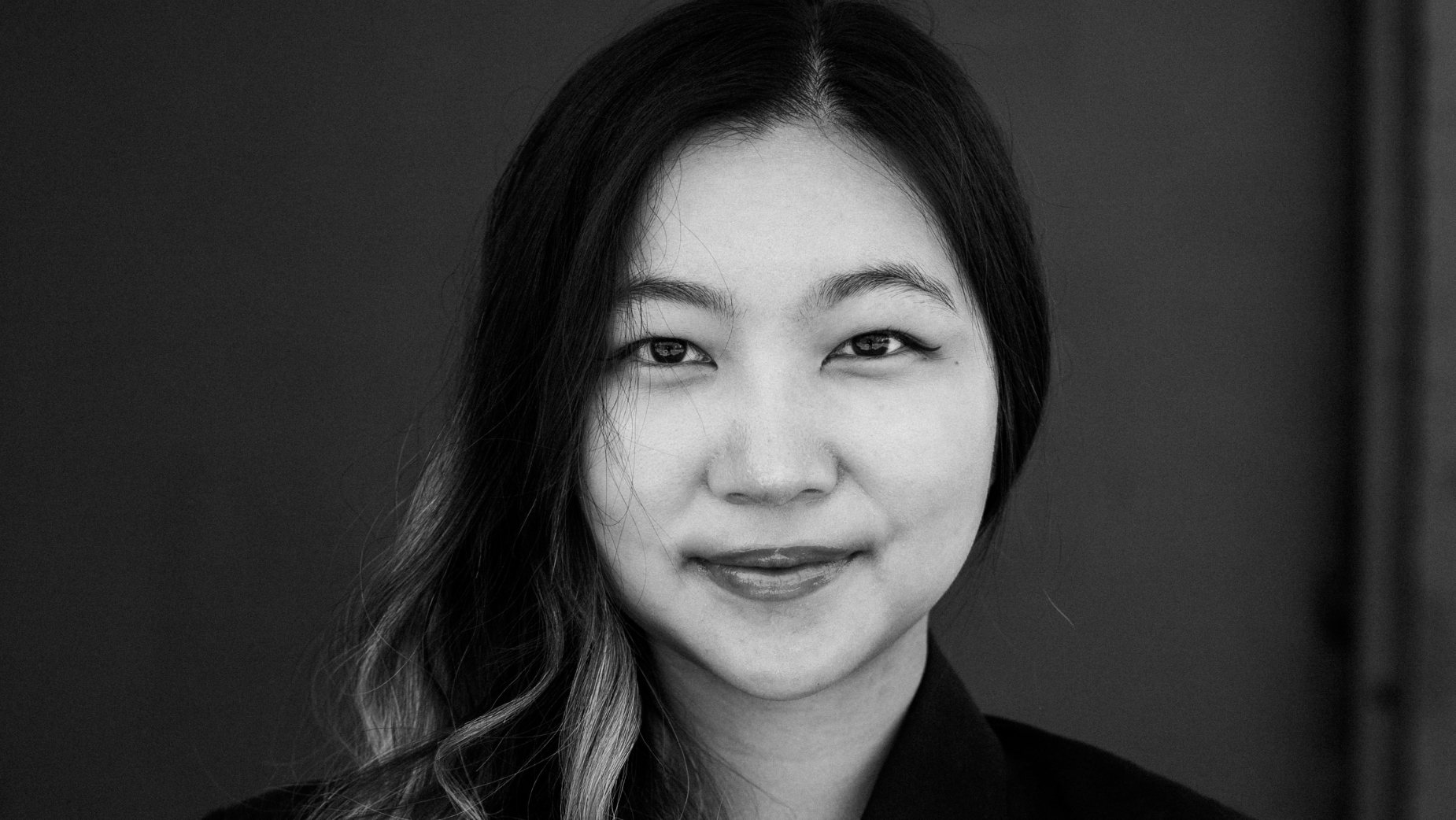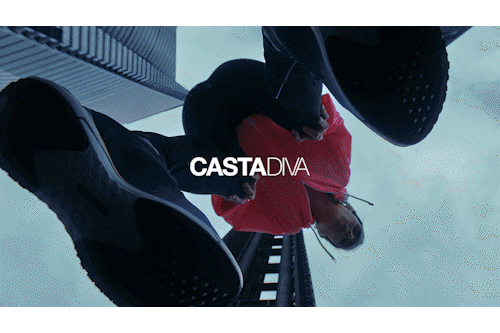
Could Design Make the World a Better Place?

“I never set out to be a designer. But looking back, every step I took – from my childhood fascination with art and storytelling to studying psychology at Stanford – led me to where I am today: solving creative problems through design at Stept Studios.”
For someone who never set out to be a designer, Stept Studios’ Suah Cho is certainly making her mark. She joined Stept almost three years ago after graduating from Stanford University, armed with a degree in psychology and art practice, a portfolio of spec ads and posters, and knowing “nothing about good design”.
From this foundation, Suah has established herself as one-to-watch. Her distinct visual style and approach is a reflection of her upbringing – spending time between South Korea and the US – and the sheer amount of art, music, culture and sport that she was immersed within that’s imprinted on her design sensibility.
“Seeing the bigger world as a small kid, I naturally started growing curiosity for different cultures, cultivated an appreciation for diversity, and increased my scale of imagination.”
As a child, Suah’s introduction to the arts was largely influenced by her father, a dedicated cinephile and avid collector of movies and vinyls. “Our house housed thousands of CDs, DVDs, and LPs. People would joke that our house had a better collection than Blockbuster’s,” she says. “My dad and I were huge nerds – we geeked-out about all the Hollywood franchises, from ‘Jurassic Park’ to ‘The Avengers’.”
Rock and classical music formed the soundtrack to Suah’s childhood, heard via her dad’s trusted record player, or at concerts. And her early exposure to music and live performance made a lasting impact. “He also introduced me to the world of classic rock, which later in my life evolved into a love for rock and all forms of alternative or experimental music.”

Above, Suah and her Dad
For some children, spending a day within the quiet, enclosed walls of a museum would be their worst nightmare. For Suah, it was the thing of dreams. “My favourite thing to do when traveling in new cities with my family was going to museums and art galleries in new cities.
“‘Night at the Museum’ was kind of my dream in a movie,” she adds. “I would always bring a sketchbook and a pen, plop down on the cold marble/wooden floor of a museum, and scribble away croquis or random thoughts I had in my mind. I loved how every historical artifact, painting, or sculpture – despite being one object frozen in time – was so alive. Teeming with stories of the past, present and future, of men, myths and monsters – a vessel of communication stretched over mankind.”
Outside of the arts, Suah was heavily involved in sports and athletics as a child, something she attributes to the superheroes she avidly watched on screen. “Despite being a tiny kid from a non-athletic family, I became quite athletic because of the power of the media I consumed.”
Displays of strength, determination and courage transferred from characters on screen to Suah herself, shaping her mindset in a way that’s still evident today. “As a kid I truly believed in the messaging of those superhero action films. Every time I played sports, I was able to be very persistent and resilient by mirroring the attitudes of my favourite characters. I would literally pretend I was a superhero in training myself and adopt that ‘can-do’ mentality. This resilience started with sports, but eventually spread to academics and my life philosophy as well.”
At high school, Suah aspired to be an animation director, and threw herself into learning the intricacies of the craft. “I barely slept for two months and finished an animation short by myself, which was awarded by Teen Animation Festival International (by Disney and Wells Fargo).” From this, she went on to collaborate with Disney and a fashion brand for San Francisco Fashion Week, but ultimately found herself burnt-out. However, a comment from a judge: “that my animation warmed his heart”, solidified her resolve to pursue art and storytelling.
Later on, as a Stanford psychology and art practice major, the significance of the superhero characteristics she’d been influenced by became more apparent. “I finally understood that adopting a superhero mentality was harnessing the power of the growth mindset.”
She also learnt more about the clear connection between visual media and people’s mindsets and attitudes. “I learned how influential media could be to one’s psychology and life – and how the right messaging with the right media could transform peoples’ lives. We are what we consume, and the same goes with the amorphous world of our minds. Our minds, and our psychology – and ultimately our lives – is the product of what we choose to consume and believe for ourselves.”
College was also the place that Suah learnt that design could have a real world impact, and could connect to things that she loved and believed in at the same time. She acted as creative director for a ‘Pitch Perfect’-inspired acapella group, The Harmonics, making posters, album covers and music videos, allowing her to nurture her life-long love for music and experiment with graphic design for the first time.
Another example lies in her work with the Stanford Prison Renaissance project, a prison reformation group that brought art to incarcerated people at San Quentin State Prison. It highlighted the transformative power of art for Suah, “Many people that collaborated with us had their lives changed drastically after starting art. It was such an effective form of rehab and expression for them – I understood the healing power of art through this club.“

Left, Suah's art show and right, with friends
Despite acting as an artist and designer for so many clubs and groups, Suah chose to intern in business development and marketing, with the goal of securing a job in a related field. That was until the Winter quarter of senior year, where Suah admits her creative impulse overrode her short term career goals, and she decided to become a designer. This decision ultimately led to the creation of her portfolio, which landed her at Stept shortly after graduating.
For Suah, design is a form of visual communication. “It’s using colours, typography, shapes, values and more to effectively deliver a message or solve a problem,” she says. “Successful design means that it has solved the problem or delivered the message – influencing all who experience it.
“Coming from a psychology background, this angle of design intrigued me. Since the world we experience today is so visually oriented, honing the art and technique of design meant ultimately gaining a powerful means of communication and influence. Art is equally as potent, but as much as I love and pursue fine art, design has an upper hand in terms of accessibility – unlike art that you experience in a museum, design is something that you can experience everywhere, across media and permeating our real lives. Paired with some kind of positive psychological intervention, design could make the world a better place.”
She approaches design with optimism and enthusiasm for the impact that it can have. “The North Star in my life is changing people for the better,” she says. “I want my design to not only reflect my wishes for a better future, but also make them come true. Ultimately, the principle that guides my design can be as simple as ‘making people happy’ or as grandiose as ‘changing humanity for the better’.”
Advertising combines Suah’s love for mediums that move people – film, art, music and sport – with her understanding of humanity on a psychological level. She describes the industry as “intentional and effective” – an artform created to influence people for business decisions. “Advertising uses cinema, design, and storytelling to make people move,” she explains, “and the industry is living proof that it works.
“I majored in psychology, because I wanted to understand and influence people. I majored in art, because I wanted to communicate my thoughts and ideas visually and creatively. I was obsessed with literature and history as a highschool kid, because I was enamoured by the storytelling that threaded the human experience. And I was interested in my dad’s business career and consulting, because I found strategy and problem solving entertaining and essential to any work I would do in the future.
“I never imagined myself to be in the advertising industry, but in hindsight, it was only natural.”












